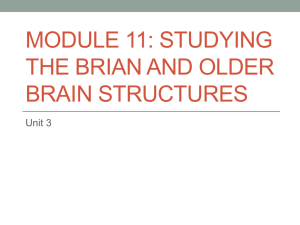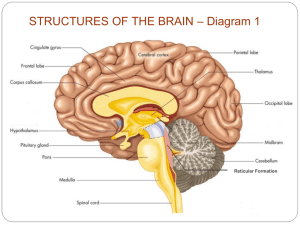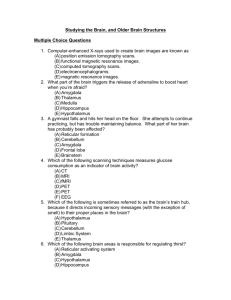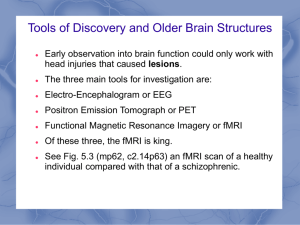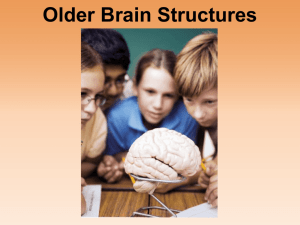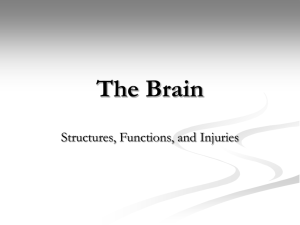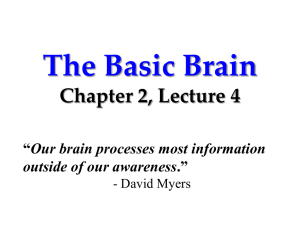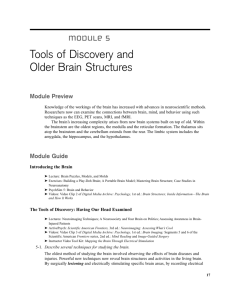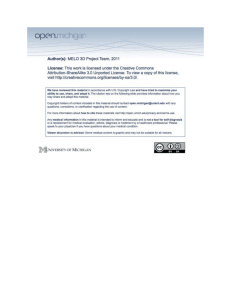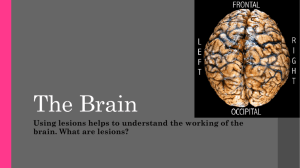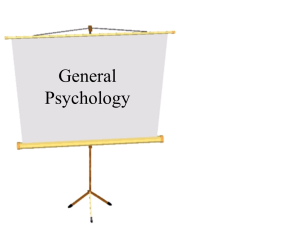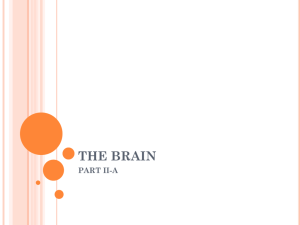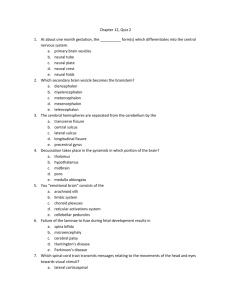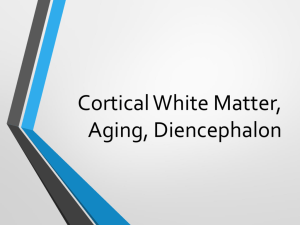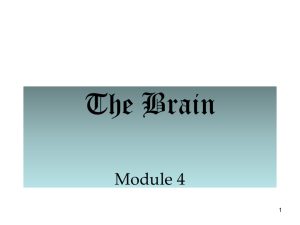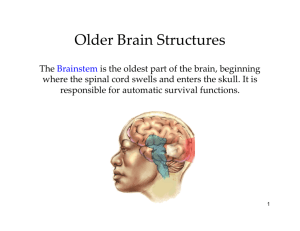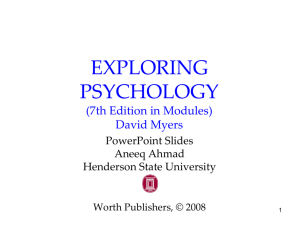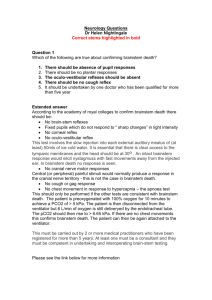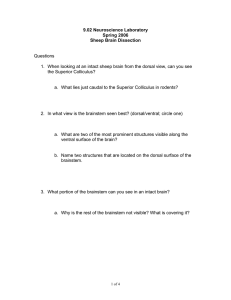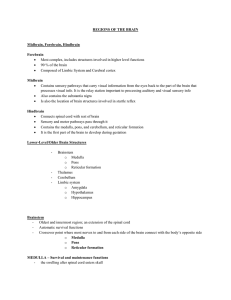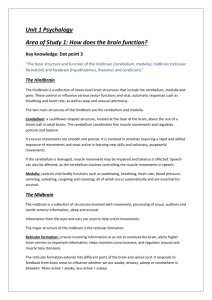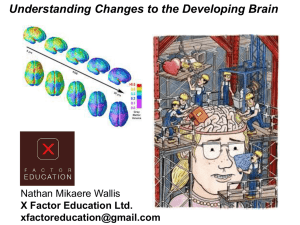A.P. Psychology 3-B (B) - Older Brain Structures
advertisement
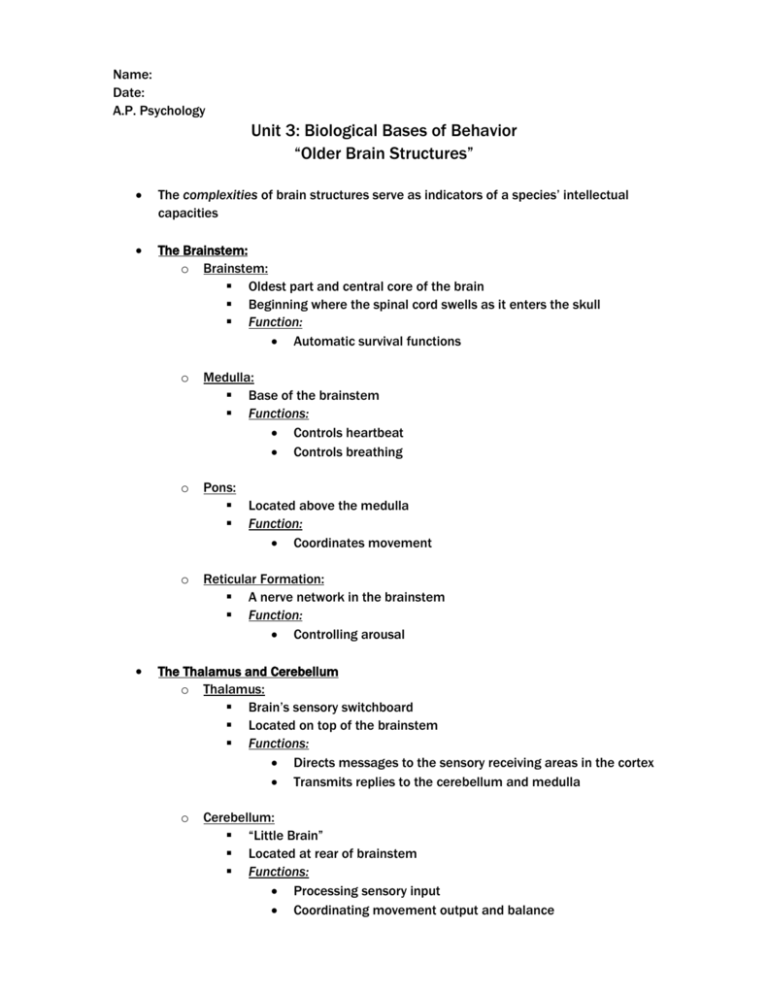
Name: Date: A.P. Psychology Unit 3: Biological Bases of Behavior “Older Brain Structures” The complexities of brain structures serve as indicators of a species’ intellectual capacities The Brainstem: o Brainstem: Oldest part and central core of the brain Beginning where the spinal cord swells as it enters the skull Function: Automatic survival functions o Medulla: Base of the brainstem Functions: Controls heartbeat Controls breathing o Pons: Located above the medulla Function: Coordinates movement o Reticular Formation: A nerve network in the brainstem Function: Controlling arousal The Thalamus and Cerebellum o Thalamus: Brain’s sensory switchboard Located on top of the brainstem Functions: Directs messages to the sensory receiving areas in the cortex Transmits replies to the cerebellum and medulla o Cerebellum: “Little Brain” Located at rear of brainstem Functions: Processing sensory input Coordinating movement output and balance The Limbic System o Limbic System: Doughnut-shaped neural system Located below the cerebral hemispheres Includes: Hippocampus Amygdala Hypothalamus Functions: Linked to Emotions/Drives o Hippocampus: Function: Processes Memory o Amygdala: Two lima bean-sized neural clusters Function: Linked to Emotion o Hypothalamus: Located below the thalamus Functions: Maintenance activities: eating, drinking, body temperature Helps govern endocrine system (via pituitary gland) Linked to emotion and reward
